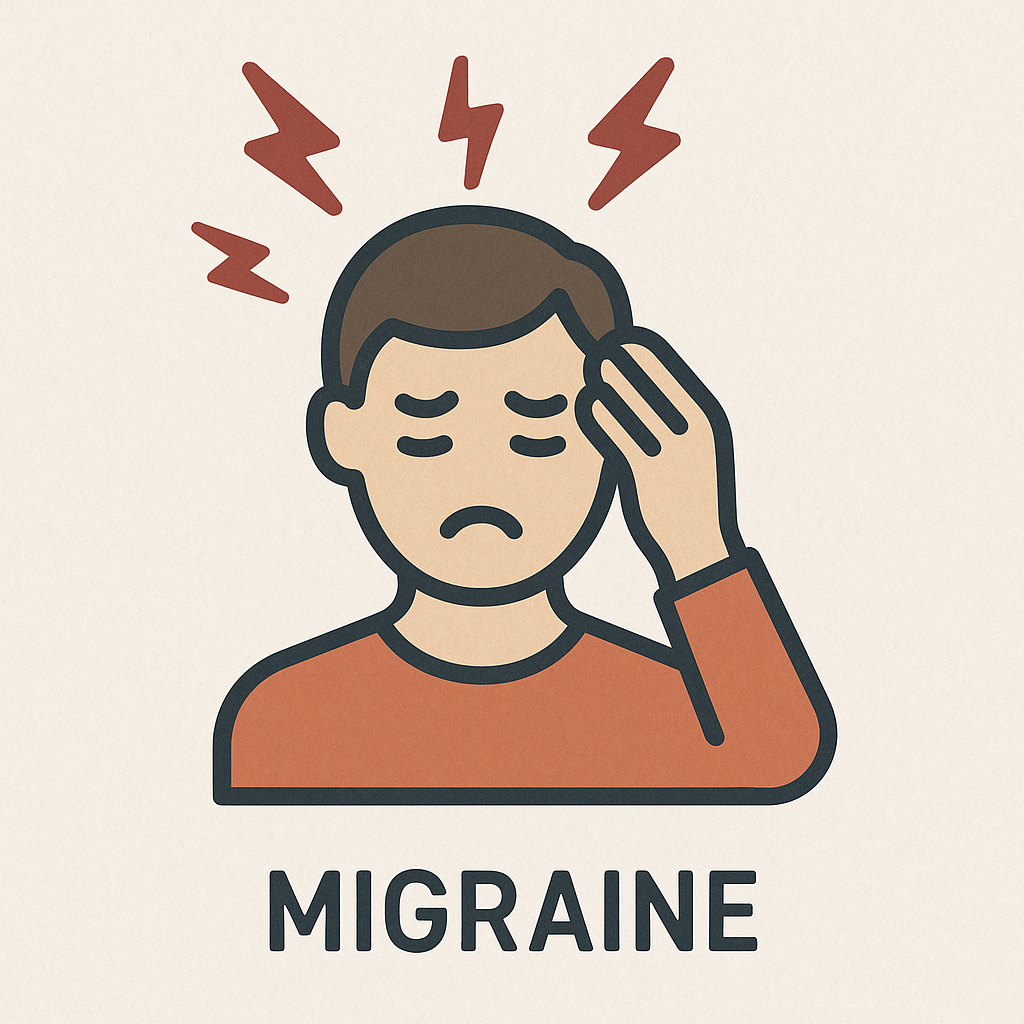Contact us for support
+91 9400799253Blog Details
Understanding Migraine Causes, Symptoms, and Diagnosis

Understanding Migraine Causes, Symptoms, and Diagnosis
Introduction
Migraine affects over a billion people worldwide, making it one of the most common and disabling neurological disorders. For many, migraines are more than just headaches—they disrupt daily life with intense pain, nausea, and sensitivity to light and sound. Despite its prevalence, migraine remains a complex condition that is often misunderstood by both patients and healthcare providers.
This blog post aims to shed light on the causes, symptoms, and diagnosis of migraines, providing valuable insights for both doctors and patients. By understanding the nature of migraines and the latest approaches to management, individuals can better navigate this challenging condition and improve their quality of life.
What is Migraine? Understanding the Disorder
Definition and Nature of Migraine
Migraine is a genetically influenced neurological disorder characterized by recurrent episodes of moderate-to-severe headaches. These headaches are typically unilateral (affecting one side of the head), pulsating, and can last anywhere from 4 to 72 hours. Alongside the headache, sufferers often experience nausea, and heightened sensitivity to light (photophobia) and sound (phonophobia).
The Four Phases of Migraine
Migraines usually progress through four distinct phases:
- Prodrome: This early phase can occur hours or even days before the headache. Symptoms include mood changes, fatigue, neck stiffness, and yawning.
- Aura: About one-third of migraine sufferers experience aura, which involves neurological symptoms such as visual disturbances (flashes, zigzag lines), sensory changes (tingling or numbness), and speech difficulties.
- Headache: The hallmark phase, characterized by throbbing or pulsating pain, often worsened by physical activity.
- Postdrome: After the headache subsides, residual symptoms like fatigue, difficulty concentrating, and neck pain may persist.
Pathophysiology: What Happens in the Brain?
Migraines involve complex brain mechanisms. Activation of the trigeminovascular system and a phenomenon called cortical spreading depression (linked to aura) trigger the release of neuropeptides such as calcitonin gene-related peptide (CGRP) and substance P. These substances cause neurogenic inflammation and pain. Genetic factors also play a significant role, influencing susceptibility to migraines.
Recognizing Migraine Symptoms
Common Symptoms
Typical migraine symptoms include:
- Moderate to severe unilateral headache with a pulsating quality.
- Nausea and vomiting.
- Sensitivity to light, sound, and sometimes smell.
- Aura symptoms like visual flashes, zigzag lines, tingling sensations, and speech difficulties.
- Significant disability during attacks, often requiring rest in a dark, quiet environment.
Impact on Daily Life
Migraines can severely affect work productivity, social interactions, and mental health. Early recognition and management are crucial to minimize these impacts and improve overall well-being.
Diagnosing Migraine: Clinical Approach
Clinical Diagnosis and Patient History
Diagnosis primarily relies on a detailed patient history and neurological examination. The International Classification of Headache Disorders (ICHD-3) criteria help classify migraines into:
- Migraine without aura.
- Migraine with aura.
- Chronic migraine (headaches on 15 or more days per month for over three months).
Differential Diagnosis
It is important to distinguish migraines from other headache types such as tension-type headaches, cluster headaches, sinus headaches, and secondary causes like stroke or meningitis.
Role of Neuroimaging
Neuroimaging is generally reserved for atypical cases or when red flags (such as sudden onset or neurological deficits) are present. It is not routinely required for typical migraine diagnosis.
Managing Migraine: Natural Remedies and Lifestyle Modifications
Lifestyle Changes to Reduce Migraine Frequency
Adopting healthy lifestyle habits can significantly reduce migraine frequency:
- Maintain a regular sleep schedule.
- Practice stress management techniques such as meditation, yoga, or cognitive-behavioral therapy.
- Avoid known triggers like certain foods, dehydration, bright lights, and loud noises.
- Engage in regular moderate exercise.
- Keep a migraine diary to identify and avoid personal triggers.
Natural Supplements and Therapies
Several natural supplements and therapies have shown benefits:
- Magnesium, Vitamin B2 (Riboflavin), and Coenzyme Q10: May reduce migraine frequency and severity.
- Herbal supplements: Ginger, butterbur, and feverfew (use with caution).
- Essential oils: Lavender and peppermint oils can help relieve symptoms.
- Complementary therapies: Acupuncture, biofeedback, massage, and acupressure may provide additional relief.
Pharmacological Treatment Spotlight: Zolmitriptan Nasal Spray
What is Zolmitriptan?
Zolmitriptan is a selective serotonin receptor agonist (triptan) used for acute migraine treatment. It works by narrowing blood vessels in the brain and blocking pain signals.
Benefits of Nasal Spray Formulation
The nasal spray is especially beneficial for patients who experience nausea or vomiting and cannot tolerate oral medications. It offers a fast onset of action, often providing relief within one hour.
Clinical Effectiveness and Usage
Clinical studies show that zolmitriptan nasal spray provides headache relief in approximately 85% of patients and improves associated symptoms like photophobia, phonophobia, and nausea. The recommended dose is 2.5 mg or 5 mg sprayed into one nostril at migraine onset, with a possible second dose after two hours if needed. It is generally well tolerated, with mild side effects such as an unpleasant taste or dizziness.
Integrating Approaches: Comprehensive Migraine Management
Optimal migraine management combines pharmacological treatments like zolmitriptan with lifestyle modifications and natural remedies. Patient education and individualized care plans are essential to empower patients to manage their condition effectively. Collaboration between patients and healthcare providers ensures the best outcomes.
When to Seek Medical Help
Seek medical attention if migraines present with unusual or severe symptoms, sudden onset, or neurological deficits. Referral to a specialist is important for complex or refractory cases.
Conclusion
Migraines are a complex neurological disorder with significant impact on quality of life. Understanding their causes, symptoms, and diagnosis is the first step toward effective management. Combining lifestyle changes, natural remedies, and pharmacological treatments like zolmitriptan nasal spray offers a comprehensive approach to controlling migraines.
If you or someone you know suffers from migraines, consult a healthcare professional for an accurate diagnosis and personalized treatment plan. Embrace both natural and medical options to take control of your migraine journey and improve your daily life.

